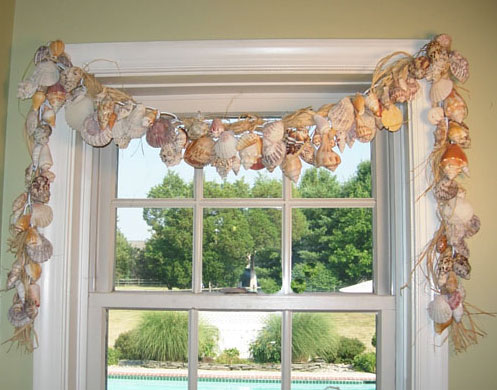We carefully tied the scallop shells to the backs of our packs. When pilgrims carry the scallop shell it represents our personal journey, the sacred path that we must take within. Starting on the outer rim of the shell, we try to find our way back to our center. Many pilgrims along the Road to Santiago wear the scallop shell to identify other pilgrims. When we see other scallop shells, we are reminded of why we are walking. Even though each person has their own story, the shell itself represents the many different spiritual pathways that lead to the same place. We are ultimately bound together by this oneness of the universal center, the spirit. On a more universal note, scallop shells relate to travel and movement.
Over the past hundreds of years, pilgrims would also be given food at churches and other establishments, and a scallop shell scoop was the measure for the food they would be donated. Further, this symbol guides pilgrims on the way, as a milestone marker pointing you in the right direction, and can provide reassurance at some points that you are still on the right path, The Way of Saint James.
In pre-Christian societies, the shape of the scallop shell also resembles the setting sun, which would be full of symbolism regarding the sun setting at the land’s end, the name to the end of The Way, Fisterra.
The grooves in the shell, which come together at a single point, could also represent the various routes for pilgrims to Santiago de Compostella. In addition, Saint James' body was believed to be covered in scallop shells after he died, which was considered a miracle in 44 AD. It is no coincidence that in French the scallop is called Coquille Saint Jacques, while in German scallops are called ‘Jakobsmuscheln’ (James mussels).
Scallop Shell Pose also known as Wide Legged Boat or Prasarita Navasana
In general, a shell’s primary purpose in nature is protection, as it is made to keep small, defenseless sea creatures safe from harm. Because of this, shells have strong protective energies. Many cultures in coastal areas protect their homes by placing strings of shells over windows and doors. Necklaces of strung shells can be worn by children to keep them close to home and safe from harm. Shells are also strongly associated with the element of water. They are linked with the moon and feminine energy, which drives ocean tides.
The Nautilus Shell, being a sacred representation for growth and rejuvenation, forms into progressively greater chambers throughout its life, and they are coated with mother-of-pearl. The golden mean number (known as PHI – 1.6180339…) can also be found in the shape of the Nautilus Shell. The universal design of the golden mean seems to be a geometrical blueprint for life itself. PHI can be seen in all biological configurations such as the seed pattern of a sunflower, the spiral pattern of a sea shell, the proportions of human and animal skeletons, and in the patterns of certain types of cactus plants. This value was known by Plato as being “the key to the physics of the cosmos.” Spiral shells can be used to stimulate energy in your home.
Nautilus Shell Pose also known as Reverse Warrior Variation or Viparita Virabhadrasana
When blown, the Conch Shell produces a loud noise. As in the famous novel, The Lord of the Flies, it can be used effectively for communicating, and as an aid in clearing up misconceptions. The conch shell was one of Buddhism’s eight auspicious symbols, signifying truthful speech and strength that is meant to awaken one from ignorance, and is a sign of victory over suffering.
Horagai are large conch shells that have been used as trumpets in Japan for many centuries. They are used for religious purposes or as a signal for samurai. In Chinese Buddhism, the conch shell signifies a prosperous journey, and in Islam it represents calling people to prayer. It also appears in the Hindu tradition of prayer. The spiral formation inside the conch is symbolic of infinity. The space, which gradually expands in a clock-wise direction is like the human journey of life.
Horagai are large conch shells that have been used as trumpets in Japan for many centuries. They are used for religious purposes or as a signal for samurai. In Chinese Buddhism, the conch shell signifies a prosperous journey, and in Islam it represents calling people to prayer. It also appears in the Hindu tradition of prayer. The spiral formation inside the conch is symbolic of infinity. The space, which gradually expands in a clock-wise direction is like the human journey of life.
Conch Pose, Commonly known as King Pigeon or Eka Pada Rajakapotasana
Ujjayi (pronounced oo-jai) Breath is a method Pranayama in Yoga practice that is commonly referred to as the “oceanic breath” that resembles the sound that a shell makes into your ear. This sound helps a yogi to synchronize breath with movements, making the entire yoga practice more rhythmic. It helps practitioners to stay present, self-aware and grounded in the practice, which lends it a meditative quality.
To begin Ujjayi breath, seal your lips and start to breath in and out through your nose.
Take an inhalation through your nose that is slightly deeper than normal. Exhale slowly through your nose while constricting the muscles in the back of your throat.
To begin Ujjayi breath, seal your lips and start to breath in and out through your nose.
Take an inhalation through your nose that is slightly deeper than normal. Exhale slowly through your nose while constricting the muscles in the back of your throat.
If you don’t hear anything, then try again with your mouth open. Exhale the sound “HAAAAH”—it’s similar to the sound you make when you’re trying to fog up a mirror. Practice a few more time with an open mouth to familiarize yourself with the muscles in the back of your throat.
Then, close your mouth and attempt a similar sound, feeling the outflow of air through your nasal passages. Once you have mastered this on the outflow, use the same method for the in-flow breath, gently constricting the back of your throat as you inhale.
Ujjayi is a diaphragmatic breath, which first fills the lower belly (activating the first and second chakras), rises to the lower rib cage (the third and fourth chakras), and finally moves into the upper chest and throat. This breath should be both long and smooth.
This technique, builds internal body heat, tones the lungs and encourages the free and healthy flow of prana, while clearing toxins out of the bodily system. The slow and rhythmic nature of the Ujjayi breath is helpful to calm nerves. Next time you find yourself with a case of the jitters, try some yogic breathing to settle the worries.
What do shells mean to you?
















